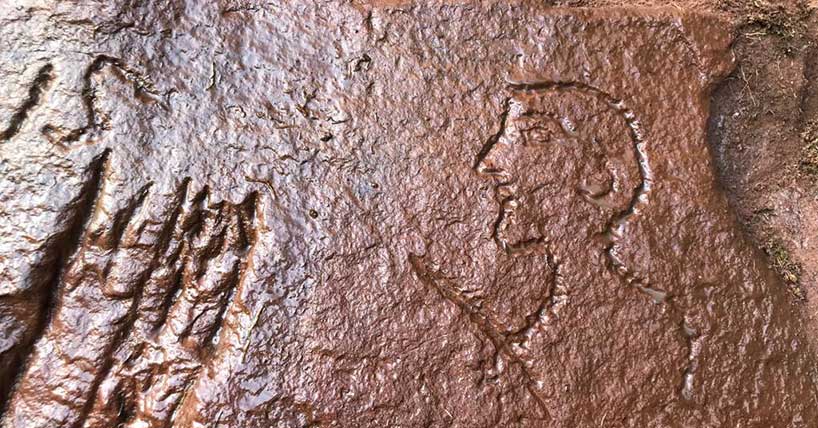Roman graffiti shortlisted
Roman graffiti shortlisted for prestigious award
Published on: 8 January 2020
A project to record graffiti made by Roman soldiers before it is lost to the elements forever has been shortlisted for Rescue Project of the Year in the Current Archaeology awards.
Archaeology by abseiling
Situated nine metres above the ground, the inscriptions were carved in AD 207 at Gelt Woods, Cumbria, by soldiers quarrying stone to repair Hadrian’s Wall.
First discovered in the 16th century, the markings have suffered in recent years because of the gradual erosion of the soft sandstone into which they were cut. Additionally, the collapse of a path up to the site in the early 1980s put a halt to the public being able to view the inscriptions.
The sensitivity of the site and the challenge of accessing the face meant that researchers were previously unable to offer a definitive interpretation of the Latin text and the range of images depicted.
All this changed when Jon Allison, an archaeologist at Newcastle University, abseiled down the quarry face to produce a 3D record of the graffiti using structure-from-motion (SfM) photogrammetry.
Ian Haynes, Professor of Archaeology at Newcastle University, said: “As well as being difficult to access, these inscriptions are very vulnerable to further gradual decay so we and our funders, Historic England, wanted to record them before they deteriorated further using the best modern technology to safeguard the ability to study them into the future.
“I’m delighted that the project has been shortlisted in the Current Archaeology awards, and I hope people will vote for it!”
The winning project will be chosen by public vote, and votes can be made by visiting www.archaeology.co.uk/vote Voting closes 10 February.

Rare inscriptions
It was thought that ‘The Written Rock of Gelt’ included a group of nine Roman inscriptions, of which only six were legible, however more have been discovered, including some that were previously thought to be lost. Four new written and figurative inscriptions were identified by the project, including a relief sculpture of a Phallus – a good luck symbol the Romans used to ward off harm.
The site is one of only a handful of Roman quarries in England to feature these kinds of inscriptions. The information recorded is of particular importance because it gives the names of men and in some instances, their rank and military units. One datable inscription ‘APRO ET MAXIMO CONSVLIBVS OFICINA MERCATI’ referring to the consulate of Aper and Maximus, offers proof of rebuilding and repair work to the Roman frontier in the early third century AD, a period when Hadrian’s Wall underwent a major repair and renewal programme.
As well as recording the graffiti and the condition it is currently in, the project, which is funded by Historic England, is allowing the public to view the Roman inscriptions via the Sketchfab 3D media platform at https://sketchfab.com/historicengland
Mike Collins, Inspector of Ancient Monuments for Hadrian’s Wall at Historic England, said: "These inscriptions at Gelt Forest are probably the most important on the Hadrian’s Wall frontier. They provide insight into the organisation of the vast construction project that Hadrian’s Wall was, as well as some very human and personal touches, such as the caricature of their commanding officer inscribed by one group of soldiers.”



